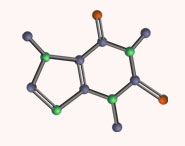


 علم الكيمياء
علم الكيمياء 
 الكيمياء التحليلية
الكيمياء التحليلية 
 الكيمياء الحياتية
الكيمياء الحياتية 
 الكيمياء العضوية
الكيمياء العضوية 
 الكيمياء الفيزيائية
الكيمياء الفيزيائية
 الكيمياء اللاعضوية
الكيمياء اللاعضوية 
 مواضيع اخرى في الكيمياء
مواضيع اخرى في الكيمياء
 الكيمياء الصناعية
الكيمياء الصناعية |
Read More
Date: 13-8-2017
Date: 7-8-2017
Date: 31-8-2017
|
Anionic Polymerization
Anionic polymerization is better for vinyl monomers with electron withdrawing groups that stabilize the intermediates. Typical monomers best polymerized by anionic initiators include acrylonitrile, styrene, and butadiene. As with cationic polymerization, a counter ion is present with the propagating chain. The propagation and the termination steps are similar to cationic polymerization.
Many initiators, such as alkyl and aryllithium and sodium and lithium suspensions in liquid ammonia, effect the polymerization. For example, acrylonitrile combined with n-butyllithium forms a carbanion intermediate:

Chain growth occurs through a nucleophilic attack of the carbanion on the monomer. As in cationic polymerizations, lower temperatures favor anionic polymerizations by minimizing branching due to chain transfer reactions.
Solvent polarity is also important in directing the reaction bath and the composition and orientation of the products. For example, the polymerization of butadiene with lithium in tetrahydrofuran (a polar solvent) gives a high 1,2 addition polymer. Polymerization of either butadiene or isoprene using lithium compounds in nonpolar solvent such as n-pentane produces a high cis-1,4 addition product. However, a higher cis-1,4-polyisoprene isomer was obtained than when butadiene was used. This occurs because butadiene exists mainly in a transoid conformation at room temperature (a higher cisoid conformation is anticipated for isoprene):




|
|
|
|
لصحة القلب والأمعاء.. 8 أطعمة لا غنى عنها
|
|
|
|
|
|
|
حل سحري لخلايا البيروفسكايت الشمسية.. يرفع كفاءتها إلى 26%
|
|
|
|
|
|
|
جامعة الكفيل: شراكتنا مع المؤسّسات الرائدة تفتح آفاقًا جديدة للارتقاء بجودة التعليم الطبّي في العراق
|
|
|